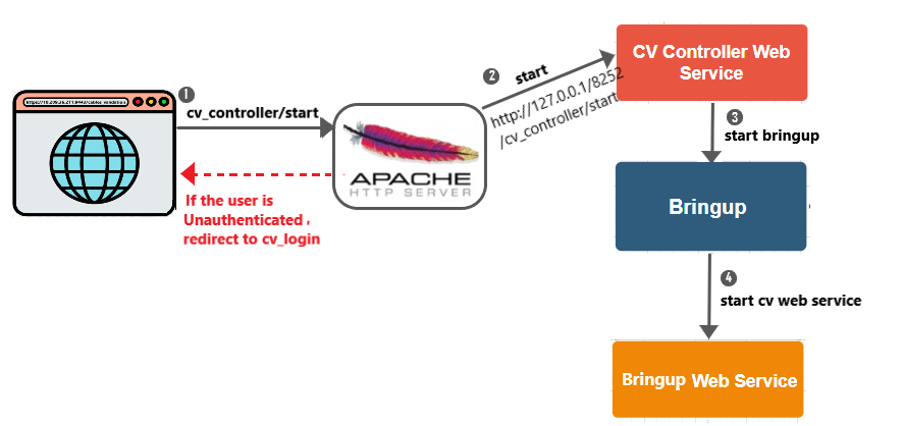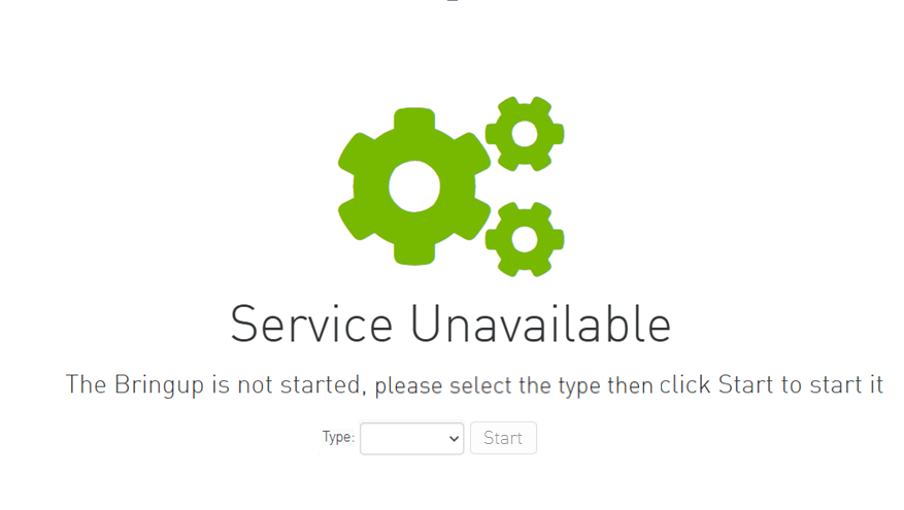Cable Validation Controller
The CV Controller is a web service that is automatically started when the CVT container is launched via supervisord. It provides REST APIs to initiate and terminate the bring-up process, enhancing usability and eliminating the need for manual steps.
The CV Controller uses Apache to handle incoming REST API requests. Apache routes any request that includes the cv_controller prefix to the CV Controller service.
Authentication is handled through session-based authentication, meaning users must be logged in to access the service.

The CV controller service output will be saved in a new log file called cv_controller_collector.log under /cable_bringup_root/log directory.
The CV controller uses port 8252 by default. Users can modify this port by updating the CV_CONTROLLER_PORT variable in the config.cfg file.
To make this adjustment, follow these steps:
As Plugin
Execute /opt/ufm/scripts/manage_ufm_plugins.sh add -p cablevalidation to add the Cable Validation plugin.
Stop the plugin using /opt/ufm/scripts/manage_ufm_plugins.sh stop -p cablevalidation
Use vim /opt/ufm/files/conf/plugins/cablevalidation/config.cfg to modify the ' CV_CONTROLLER_PORT ' variable.
Update and save the file.
Start the plugin again with /opt/ufm/scripts/manage_ufm_plugins.sh start -p cablevalidation.
As Standalone
Pass the new port as Env by executing docker run --name cables_bringup -itd --network=host --env CV_CONTROLLER_PORT=<new-port> cables_bringup
With these changes, the new configuration will take effect, and Apache will run with the updated ports.
When a user accesses the web page of the Cable Validation Tool, the following screen will appear if the bring-up service has not yet started:

The page displays a button to start the bring-up process, along with a drop-down menu to select the bring-up type (e.g., InfiniBand, XDR, Ethernet).
After starting the bringup service, Users can also stop the bring-up service from the Service tab on the System Admin page.
